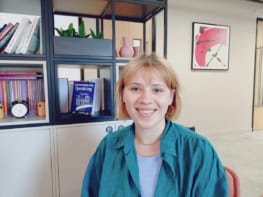Wei Yang – president of the National Natural Science Foundation of China – talks to Matin Durrani about how the agency supports basic research and what it’s doing to boost the quality of physics in China

What are the main aims of the National Natural Science Foundation of China (NSFC)?
The NSFC was set up 30 years ago in 1986 after being proposed by a group of scientists led by the Nobel-prize-winning physicist Tsung-dao Lee. They told the then Chinese leader Deng Xiaoping that the US has its own National Science Foundation and China should have something similar. He agreed.
How big is your budget?
It’s increased 300-fold since the NSFC was founded. Back then it was about ¥80m ($12m) annually. Now it’s about ¥24.8bn per year.
What areas does the NSFC fund?
We support all the main branches of natural science including mathematics, physics, chemistry, biosciences, earth science, engineering and materials, IT and medicine. We also support some data-driven social and management science too.
How much money does physics get?
We have two main budget lines. Physics I is mainly condensed-matter physics, while Physics II is particle physics, theoretical physics and astronomy. Altogether, they get more than ¥1bn a year.
How many researchers does the NSFC support?
We hand out about 40,000 new research grants each year, which together support about 150,000 people when you take into account students, postdocs and research assistants too. The success rate for those applying for funding is about 22–25%, which is okay. I think a quarter is the golden ratio – neither too high nor too low.
You were appointed president of the NSFC in 2013 – what have been your main achievements during that time?
I have secured a total budget increase of 50% during my three-year tenure. And as well as paying for researchers’ “direct” costs, the NSFC now also funds their “indirect” costs, such as the money for lab space, infrastructure and so on to the hosting institutions. Previously that money went to institutions as a lump sum and they’d charge scientists a certain percentage as a management fee. I’ve also changed the regulations so that someone applying for a grant can support however many graduate students, postdocs and so on that an individual researcher needs. There’s no upper limit on how many they can request.
What are your main challenges as NSFC boss?
I’ve just written an article in Nature saying the importance of raising the quality, integrity and applicability of Chinese science (534 467). In the article, I describe how the NSFC’s mission is to be a “FRIEND” of scientists: fair in reviews; rewarding in fostering research; international in global participation; efficient in management; numerous in grants; and diversified in disciplinary coverage. I also want to get more “monumental” contributions to different branches of science, not researchers just doing more of the same.
How do you evaluate whether grant money has been well spent?
Every year we have an external evaluation where independent experts check a certain percentage of grants in our eight main areas. We don’t monitor every single grant though. We also don’t evaluate the performance of individual researchers funded by the NSFC as we feel that would make them conservative and suppress their creativity.
So how do you measure success?
Publication records are one factor, of course, though we think quality is more important than the sheer number of papers produced. We also survey researchers to find out if they were satisfied with the performance of the NSFC – and that includes asking scientists who failed to receive grants. What’s interesting is that 20 years ago, when you look at the top 0.1% most cited papers, Chinese researchers accounted for less than 0.5% of those publications. Now they contribute a fifth of those articles.
What about tackling fraud and misconduct?
That’s important, yes. I want to reduce cases of misconduct, which have gone up a bit recently, and raise the overall reputation of Chinese research work.
What’s your view on open access?
Chinese researchers can publish in any journals – they don’t have to be open-access journals. However, the official policy of the NSFC is to support green open access, which means that scientists have to place a copy of their final paper in our own NSFC electronic repository 12 months after it’s been published in a peer-reviewed scientific journal. Having said that, China published 45,000 papers in open-access journals last year, which is 21% of the world’s total and exceeds the amount from the US.
Do you follow developments in physics?
It’s been very exciting to see the Laser Interferometer Gravitational-Wave Observatory detect gravitational waves and we are planning several initiatives of our own in China in this area. We’re also building the China Jingping Underground Laboratory in south-western China and we’ve got our satellite programme to search for dark matter and carry out space-to-Earth quantum communication.



